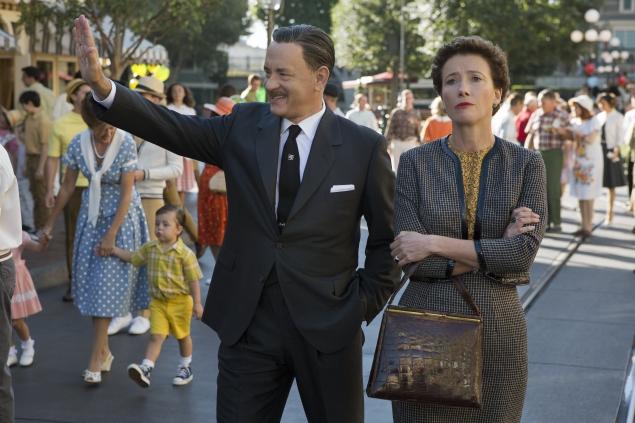
Saving Mr. Banks (2013) / Drama-Comedy
MPAA Rated: PG-13 for thematic elements including some unsettling images
Running Time: 125 min.Cast: Emma Thompson, Tom Hanks, Annie Rose Buckly, Colin Farrell, Ruth Wilson, Paul Giamatti, Bradley Whitford, B.J. Novak, Jason Schwartzman, Lily Bigham, Kathy Baker, Melanie Paxson, Andy McPhee, Rachel Griffiths
Director: John Lee Hancock
Screenplay: Kelly Marcel, Sue Smith
Review published December 16, 2013
 John Lee Hancock
(The Blind Side, The Rookie) directs Saving Mr. Banks, a live-action
Disney film about the making of another live-action Disney film, Mary
Poppins. In this high-gloss tale based on true events, we learn that it took Walt Disney (Hanks,
Captain Phillips) two decades of
persistent massaging in order to finally get a financially strapped
P.L. Travers (Thompson, Men in Black 3), the author of the books
on the "Mary Poppins" character, to finally bring
forward his dream, as well as that of his daughters, to adapt her
beloved children's story into
a major motion picture that would become a family favorite for future generations.
John Lee Hancock
(The Blind Side, The Rookie) directs Saving Mr. Banks, a live-action
Disney film about the making of another live-action Disney film, Mary
Poppins. In this high-gloss tale based on true events, we learn that it took Walt Disney (Hanks,
Captain Phillips) two decades of
persistent massaging in order to finally get a financially strapped
P.L. Travers (Thompson, Men in Black 3), the author of the books
on the "Mary Poppins" character, to finally bring
forward his dream, as well as that of his daughters, to adapt her
beloved children's story into
a major motion picture that would become a family favorite for future generations.